#d1cad1 Color Information
In a RGB color space, hex #d1cad1 is composed of 82% red, 79.2% green and 82% blue. Whereas in a CMYK color space, it is composed of 0% cyan, 3.3% magenta, 0% yellow and 18% black. It has a hue angle of 300 degrees, a saturation of 7.1% and a lightness of 80.6%. #d1cad1 color hex could be obtained by blending #ffffff with #a395a3. Closest websafe color is: #cccccc.
-
- R 82
- G 79
- B 82
-
- C 0
- M 3
- Y 0
- K 18
● #d1cad1 color description : Grayish magenta.
#d1cad1 Color Conversion
The hexadecimal color #d1cad1 has RGB values of R:209, G:202, B:209 and CMYK values of C:0, M:0.03, Y:0, K:0.18. Its decimal value is 13748945.
| Hex triplet | d1cad1 | #d1cad1 |
|---|---|---|
| RGB Decimal | 209, 202, 209 | rgb(209,202,209) |
| RGB Percent | 82, 79.2, 82 | rgb(82%,79.2%,82%) |
| CMYK | 0, 3, 0, 18 | |
| HSL | 300°, 7.1, 80.6 | hsl(300,7.1%,80.6%) |
| HSV (or HSB) | 300°, 3.3, 82 | |
| Web Safe | cccccc | #cccccc |
| CIE-LAB | 82.055, 3.681, -2.622 |
|---|---|
| XYZ | 58.922, 60.4, 68.872 |
| xyY | 0.313, 0.321, 60.4 |
| CIE-LCH | 82.055, 4.52, 324.546 |
| CIE-LUV | 82.055, 3.56, -4.62 |
| Hunter-Lab | 77.717, -0.675, 1.86 |
| Binary | 11010001, 11001010, 11010001 |
Color Schemes with #d1cad1
Alternatives to #d1cad1
Below, you can see some colors close to #d1cad1. Having a set of related colors can be useful if you need an inspirational alternative to your original color choice.
#d1cad1 Preview
This text has a font color of #d1cad1.
<span style="color:#d1cad1;">Text here</span>This paragraph has a background color of #d1cad1.
<p style="background-color:#d1cad1;">Content here</p>This element has a border color of #d1cad1.
<div style="border:1px solid #d1cad1;">Content here</div>.text {color:#d1cad1;}.background {background-color:#d1cad1;}.border {border:1px solid #d1cad1;}Shades and Tints of #d1cad1
A shade is achieved by adding black to any pure hue, while a tint is created by mixing white to any pure color. In this example, #0a090a is the darkest color, while #ffffff is the lightest one.
-
#0a090a
#0a090argb(10,9,10) -
#151215
#151215rgb(21,18,21) -
#1f1b1f
#1f1b1frgb(31,27,31) -
#2a242a
#2a242argb(42,36,42) -
#342d34
#342d34rgb(52,45,52) -
#3f363f
#3f363frgb(63,54,63) -
#493f49
#493f49rgb(73,63,73) -
#544854
#544854rgb(84,72,84) -
#5e525e
#5e525ergb(94,82,94) -
#695b69
#695b69rgb(105,91,105) -
#736473
#736473rgb(115,100,115) -
#7e6d7e
#7e6d7ergb(126,109,126) -
#887688
#887688rgb(136,118,136)
-
#918091
#918091rgb(145,128,145) -
#9a8b9a
#9a8b9argb(154,139,154) -
#a395a3
#a395a3rgb(163,149,163) -
#ada0ad
#ada0adrgb(173,160,173) -
#b6aab6
#b6aab6rgb(182,170,182) -
#bfb5bf
#bfb5bfrgb(191,181,191) -
#c8bfc8
#c8bfc8rgb(200,191,200) -
#d1cad1
#d1cad1rgb(209,202,209) -
#dad5da
#dad5dargb(218,213,218) -
#e3dfe3
#e3dfe3rgb(227,223,227) -
#eceaec
#eceaecrgb(236,234,236) -
#f5f4f5
#f5f4f5rgb(245,244,245) -
#ffffff
#ffffffrgb(255,255,255)
Tones of #d1cad1
A tone is produced by adding gray to any pure hue. In this case, #d1cad1 is the less saturated color, while #ff9cff is the most saturated one.
-
#d1cad1
#d1cad1rgb(209,202,209) -
#d5c6d5
#d5c6d5rgb(213,198,213) -
#d9c2d9
#d9c2d9rgb(217,194,217) -
#dcbfdc
#dcbfdcrgb(220,191,220) -
#e0bbe0
#e0bbe0rgb(224,187,224) -
#e4b7e4
#e4b7e4rgb(228,183,228) -
#e8b3e8
#e8b3e8rgb(232,179,232) -
#ecafec
#ecafecrgb(236,175,236) -
#efacef
#efacefrgb(239,172,239) -
#f3a8f3
#f3a8f3rgb(243,168,243) -
#f7a4f7
#f7a4f7rgb(247,164,247) -
#fba0fb
#fba0fbrgb(251,160,251) -
#ff9cff
#ff9cffrgb(255,156,255)
Color Blindness Simulator
Below, you can see how #d1cad1 is perceived by people affected by a color vision deficiency. This can be useful if you need to ensure your color combinations are accessible to color-blind users.
